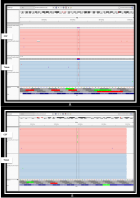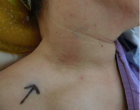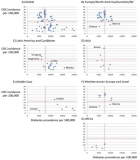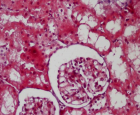Abstract
Review Article
Fluorinated nematicides: Novel classes in the way
Mohamed S Khalil* and Rasha E Selim
Published: 19 February, 2021 | Volume 5 - Issue 1 | Pages: 014-016
The demand on non- fumigant nematicides was strongly increased in the last few years, and this interesting in nematicides are due to farmers are needed for safer pesticides and increasing of the regulatory pressure on many of the traditional nematicides. The control of plant parasitic nematodes with synthetic nematicides is the most widespread and preferred method, but not always effective enough. The most of synthetic nematicides especially non-fumigants are high toxic to non-target organisms. Thus, Novel non-fumigant nematicides were appeared as alternatives.
The group of trifluoromethyl contains both fluensulfone and fluopyram which are different in mode of action than traditional nematicides as organophosphate and carbamate. Meanwhile, results indicated that fluensulfone and fluopyram are promising nematicides. These new nematicides are very different from traditional nematicides; they are more selective, less toxic and safer to use.
Read Full Article HTML DOI: 10.29328/journal.jpsp.1001055 Cite this Article Read Full Article PDF
Keywords:
Nematicides; Fluensulfone, Fluopyram
References
- Khalil MS, Darwesh DM. Some integrated practices to manage root-knot nematodes on tomatoes: A Mini Review. Innovat Techniq Agric. 2018; 3: 618-625.
- Abd El-Aziz MH, Khalil MS. Antiviral and Antinematodal potentials of chitosan: Review. J Plant Sci Phytopathol. 2000; 4: 55-59. https://www.heighpubs.org/jpsp/jpsp-aid1051.php
- Desaeger JA, Watson TT. Evaluation of new chemical and biological nematicides for managing Meloidogyne javanica in tomato production and associated double-crops in Florida. Pest Manag Sci. 2019; 75: 3363-3370. PubMed: https://pubmed.ncbi.nlm.nih.gov/31074102/
- Faske TR, Hurd K. Sensitivity of Meloidogyne incognita and Rotyenchulus reniformis to fluopyram. J Nematol. 2015; 47: 316–321. PubMed: https://pubmed.ncbi.nlm.nih.gov/26941460/
- Morris KA, Langston DB, Dickson DW, Davies RF, Timper P, et al. Efficacy of fluensulfone in a tomato‐cucumber double cropping system. J Nematol. 2016; 47: 310–315. PubMed: https://pubmed.ncbi.nlm.nih.gov/26941459/
- Morris KA, Langston DB, Davis RF, Noe JP, Dickson, et al. Efficacy of various application methods of fluensulfone for managing root‐knot nematodes in vegetables. J Nematology. 2016; 48: 65–71. PubMed: https://pubmed.ncbi.nlm.nih.gov/27418698/
- Oka Y, Shuker S, Tkachi N. Nematicidal efficacy of MCW-2, a new nematicide of the fluoroalkenyl group, against the root-knot nematode Meloidogyne javanica. Pest Manage. 2009; Sci. 65: 1082–1089. PubMed: https://pubmed.ncbi.nlm.nih.gov/19488996/
- Jeanmart S, Edmunds EF, Lamberth C, Pouliot M. Synthetic approaches to the 2010-2014 new agrochemicals. Bioorg Med Chem. 2016; 24: 317-341. PubMed: https://pubmed.ncbi.nlm.nih.gov/26725441/
- Maienfisch P, Edmunds AJF. Thiazole and isothiazole ring containing compounds in crop protection. In: Advances in Heterocyclic Chemistry. (edS. E.F.V. Scriven and C.A. Ramsden), 2017; 21: 35–88.
- Australian Pesticides and Veterinary Medicines Authority. Evaluation of the new active Fluensulfone in the product Nimitz 480 EC nematicide. 2015. http://apvma.gov.au/node/15611.
- Dent JA, Smith MM, Vassilatis DK, Avery L. The genetics of ivermectin resistance in Caenorhabditis elegans. Proc Natl Acad Sci. U.S.A. 2000; 97: 2674–2679. PubMed: https://pubmed.ncbi.nlm.nih.gov/10716995/
- Lai MT, Liu LD, Liu HW. J Am Chem Soc. 1991; 113: 7388–7397.
- Dakoji S, Shin I, Becker DF, Stankovich MT, Liu H, et al. Studies of Acyl-CoA Dehydrogenase Catalyzed Allylic Isomerization: A One-Base or Two-Base Mechanism? J Am Chem Soc. 1996; 118: 10971–10979.
- Mansoorabadi SO, Thibodaux CJ, Liu HW. The diverse roles of flavin coenzymes--nature's most versatile thespians. J Org Chem. 2007; 72: 6329–6342. PubMed: https://pubmed.ncbi.nlm.nih.gov/17580897/
- Kearn J, Ludlow E, Dillon J, O'Connor V, Holden-Dye L, et al. Fluensulfone is a nematicide with a mode of action distinct from anticholinesterases and macrocyclic lactones. Pesticides Biochem Physiol. 2014; 109: 44–57. PubMed: https://pubmed.ncbi.nlm.nih.gov/24581383/
- Pitterna T, Boeger M, Maienfisch P. gem-Difluorovinyl Derivatives as Insecticides and Acaricides. Chimia. 2004; 58: 108–116.
- Dahlin P, Eder R, Consoli E, Krauss J, Kiewnick S. Integrated control of Meloidogyne incognita in tomatoes using fluopyram and Purpureocillium lilacinum strain 251. Crop Protection. 2019; 124: 1-7.
- Yue X, Li F, Wang B. Activity of four nematicides against Meloidogyne incognita race 2 on tomato plants. J Phytopathol. 2000; 168: 399-404.
- Oka Y, Berson M, Barazani A. Proceedings, 5th International Congress of Nematology (13–18 July), Brisbane, Australia. 2008; 313–314.
- Rieck H, Coqueron PY. Modern Crop Protection Compounds, Insecticides, Vol. 3 (eds. W. Krämer, U. Schirmer, P. Jeschke and M. Witschel), Weinheim, Germany: Wiley‐VCH. 2012; 639–645.
- McDougall P. Industry Overview (Market). 2014. https://www.phillipsmcdougall.com/home
- Clarke ED, Delaney JS. Physical and Molecular Properties of Agrochemicals: An Analysis of Screen Inputs, Hits, Leads, and Products Chimia. 2003; 57: 731–734.
- Broeksma A, Puetzkuhl K, Lamprecht S, Fuersch H. Velum®‐ An evolutionary nematicide for efficient crop production. J Nematol. 2014; 46: 140–141.
- Luemmen P, Huang LS, Lisse D, Berry EA. 248th ACS National Meeting & Exposition (10–14 August 2014), San Francisco, CA, USA. Abstracts of Papers, AGRO‐131. 2014.
- Burrows PR, Kerry BR, Perry RN. J Zool Lond. 1994; 232: 341–346.
- Slaats BE. Investigations on the efficacy of encapsulation of the endoparasitic fungus Hirsutella rhossiliensis for control of plant‐parasitic nematodes. Gottingen: V & R Uni press GmbH. 2008; 135.
- Bayer Crop Science. Press release. 2009. http://www.bayercropscience.com
- Bayer Crop Science News Release 2015. http://news.agropages.com/News/
Figures:

Figure 1

Figure 2
Similar Articles
-
Avermectins: The promising solution to control plant parasitic nematodesMohamed S Khalil*,Dalia M Darwesh. Avermectins: The promising solution to control plant parasitic nematodes. . 2019 doi: 10.29328/journal.jpsp.1001036; 3: 081-085
-
Nematicidal effect of abamectin, boron, chitosan, hydrogen peroxide and Bacillus thuringiensis against citrus nematode on Valencia orangSherin FA Awd Allah*,Sandy E Hammad,MAM El-Saedy. Nematicidal effect of abamectin, boron, chitosan, hydrogen peroxide and Bacillus thuringiensis against citrus nematode on Valencia orang. . 2019 doi: 10.29328/journal.jpsp.1001041; 3: 111-117
-
Fluorinated nematicides: Novel classes in the wayMohamed S Khalil*,Rasha E Selim. Fluorinated nematicides: Novel classes in the way. . 2021 doi: 10.29328/journal.jpsp.1001055; 5: 014-016
-
Nematicides in EgyptMohamed S Khalil*. Nematicides in Egypt. . 2022 doi: 10.29328/journal.jpsp.1001069; 6: 022-023
Recently Viewed
-
Environmental Factors Affecting the Concentration of DNA in Blood and Saliva Stains: A ReviewDivya Khorwal*, GK Mathur, Umema Ahmed, SS Daga. Environmental Factors Affecting the Concentration of DNA in Blood and Saliva Stains: A Review. J Forensic Sci Res. 2024: doi: 10.29328/journal.jfsr.1001057; 8: 009-015
-
Markov Chains of Molecular Processes of Biochemical MaterialsOrchidea Maria Lecian*. Markov Chains of Molecular Processes of Biochemical Materials. Int J Phys Res Appl. 2024: doi: 10.29328/journal.ijpra.1001076; 7: 001-005
-
Generation of Curved Spacetime in Quantum FieldSarfraj Khan*. Generation of Curved Spacetime in Quantum Field. Int J Phys Res Appl. 2024: doi: 10.29328/journal.ijpra.1001077; 7: 006-009
-
Optimizing Milk Safety: Applying Nuclear Techniques in X-ray Fluorescence Spectroscopy for Heavy Metal Quantification in Powdered Milk Consumed in SenegalPapa Macoumba Faye*, Djicknack Dione, Oumar Ndiaye, Moussa Hamady SY, Nogaye Ndiaye, Alassane Traore, Ababacar Sadikhe Ndao. Optimizing Milk Safety: Applying Nuclear Techniques in X-ray Fluorescence Spectroscopy for Heavy Metal Quantification in Powdered Milk Consumed in Senegal. Int J Phys Res Appl. 2024: doi: 10.29328/journal.ijpra.1001078; 7: 010-015
-
Thermoelectric Materials Based on Lead Telluride and Prospects for their Practical ApplicationYuriy Pavlovskyy*, Nadiya Pavlovska. Thermoelectric Materials Based on Lead Telluride and Prospects for their Practical Application. Int J Phys Res Appl. 2024: doi: 10.29328/journal.ijpra.1001079; 7: 016-018
Most Viewed
-
Evaluation of Biostimulants Based on Recovered Protein Hydrolysates from Animal By-products as Plant Growth EnhancersH Pérez-Aguilar*, M Lacruz-Asaro, F Arán-Ais. Evaluation of Biostimulants Based on Recovered Protein Hydrolysates from Animal By-products as Plant Growth Enhancers. J Plant Sci Phytopathol. 2023 doi: 10.29328/journal.jpsp.1001104; 7: 042-047
-
Sinonasal Myxoma Extending into the Orbit in a 4-Year Old: A Case PresentationJulian A Purrinos*, Ramzi Younis. Sinonasal Myxoma Extending into the Orbit in a 4-Year Old: A Case Presentation. Arch Case Rep. 2024 doi: 10.29328/journal.acr.1001099; 8: 075-077
-
Feasibility study of magnetic sensing for detecting single-neuron action potentialsDenis Tonini,Kai Wu,Renata Saha,Jian-Ping Wang*. Feasibility study of magnetic sensing for detecting single-neuron action potentials. Ann Biomed Sci Eng. 2022 doi: 10.29328/journal.abse.1001018; 6: 019-029
-
Pediatric Dysgerminoma: Unveiling a Rare Ovarian TumorFaten Limaiem*, Khalil Saffar, Ahmed Halouani. Pediatric Dysgerminoma: Unveiling a Rare Ovarian Tumor. Arch Case Rep. 2024 doi: 10.29328/journal.acr.1001087; 8: 010-013
-
Physical activity can change the physiological and psychological circumstances during COVID-19 pandemic: A narrative reviewKhashayar Maroufi*. Physical activity can change the physiological and psychological circumstances during COVID-19 pandemic: A narrative review. J Sports Med Ther. 2021 doi: 10.29328/journal.jsmt.1001051; 6: 001-007

HSPI: We're glad you're here. Please click "create a new Query" if you are a new visitor to our website and need further information from us.
If you are already a member of our network and need to keep track of any developments regarding a question you have already submitted, click "take me to my Query."



















































































































































